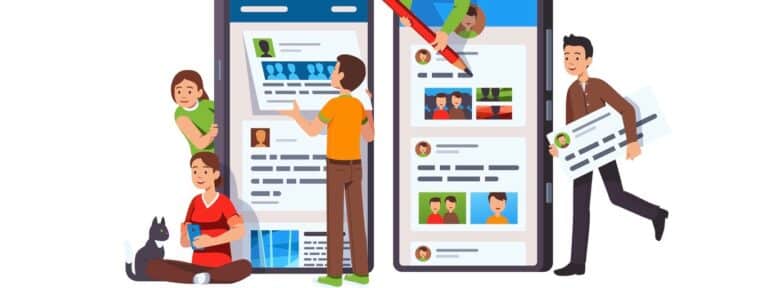In 2011, neuroscientist T. Sigi Hale, PhD was principal researcher leading a National Institute of Health-funded lab at UCLA. He left academia to enter the market research industry, and helped pioneer the behavioral science movement, leading development of breakthrough research techniques.
From his first encounter with the world of ‘marketing science’ to his experience over the following decade, he observed conventions, themes, habits, as well as mistakes made. Sigi emerged as a leading expert in applying what ‘behavioral science’ has to offer the marketing insights field.
While many in neuromarketing are drawn to the sparkle of ‘gadgetry’ such as eye tracking and biomonitoring, Sigi revealed three core insights that can guide marketers to more effective brand activation—and which dramatically simplify the seemingly mysterious applications of neuroscience in business.

Sigi Hale, PhD was a National Institute of Health-funded neuroscientist and principal investigator at UCLA before entering the private sector. He is now Principal Neuroscientist / Director of Research at Alpha-Diver, the market research & consulting firm that applies neuroscience to more deeply understand marketplace behavior. The firm’s behavioral scientists and strategists work with leading brands, retailers and the Wall Street analyst community to explain, measure, and predict consumer behavior.
Observation 1: Market research is model-free; academic research is model-based.
The fundamental difference between academic research and market research is the philosophical divide between “model-free” and “model-based” research.
The majority of conventional market research remains model free. Under this philosophy, researchers go forth to collect data (physically or digitally, qualitatively or quantitatively) without a model, simply observing consumer behavior, asking people why they do one thing over another. Then, they return to their huddle rooms to analyze the data; in an effort to reveal “the model” from the data.
This effort to divine signal from the noise of the data amassed is doomed to introduce subjectivity, bias, and inaccuracies. Moreover, this approach fails to leverage previous research.
Academic research is different
Academic research looks much different. In academia (i.e., Sigi’s university lab), the first stage is to identify a reliable model and cultivate an associated set of hypotheses to frame the data collection. Then, field work is driven not by collecting disparate data, but by mapping data collection back to the model, which provides the guide to what the researcher is looking for. Not only does this dramatically reduce the churn which often paralyzes market research analyses, it “stands on the shoulders” of previous research to assure objectivity in the findings. While this comparison between these two approaches to research sounds simple, it’s quite cathartic.
Consider an analogy from everyday life: imagine you want to go for a hike. There are two basic choices…
- Choice 1: consult a trail map; follow an established path to your destination.
- Choice 2: forge off into the woods and simply wander around.
Most people will agree that having a map is a more reliable experience. And yet, most market research projects look a lot like wandering in the woods. Model free research amounts to wandering in the natural habitats of consumers and hoping to stumble upon discoveries.
Observation 2: Human beings are incapable of explaining why they do things.
In an interview at the recent IAB Brand Disruption 2023 Summit, Gopuff founder and co-CEO, Rafael Ilishayev discussed the popularity of having pints of ice-cream delivered. Axiom reporter Sara Fischer, who conducted the interview, noted that surely this was driven by Gopuff’s reliably speedy delivery.
While Ilishayev agreed, he shared a more insightful explanation of Gopuff’s performance in ice-cream: simply that ordering ice-cream for home delivery spares the shopper from social judgement.
Picture yourself walking into a convenience store and carrying three pints of Chunky Monkey to the checkout. Not exactly an occasion you’d rush to share on Instagram. Now picture swiping your way to order not three but FOUR pints on Gopuff, and having them dropped on your doorstep minutes later. No judgment, embarrassment, or hesitation—just pure enjoyment.
And yet, if the Gopuff team were to gather young consumers in a traditional focus group, they’d insist that ordering from Gopuff is simply more convenient; in other words, they’d cite the plausible reasons for their behavior.
Social aspect of behavior is key
But the social aspect of behavior is more accurate as to they WHY of the behavior. To wit, Gopuff sells more pints of ice-cream in a given order than traditional retailers. All this is an excellent demonstration of the fallibility of our perceptions as to the causation. Plainly, from the brain-science perspective, human beings are incapable of explaining WHY we do (or don’t do) things.
Yet most market research techniques continue to ask them to do so. Regardless of methodology, most marketing science asks people what they like, don’t like, want more of, want less of, etc. And while research respondents try to provide answers, they’re actually providing highly-filtered narratives, alibis, and perceptions. In other words, they’re reporting what they THINK consumers think.
Neuroscience, leveraging decades of past research, seeks more durable (often subconscious) measures of the factors that explain, and even predict human behavior.
Observation 3: Behavior is predictable.
This is a third-rail for many. This definition of predictability relates to the durable aspects of human behavior. Most everyone can relate to walking around a corner and being startled by someone unexpectedly appearing. When this happens, what does the startled person do? Intuitively—they jump, flinch, or physically recoil. This is predictable.
Likewise, there are predictable lenses through which a person views everyday decisions, including purchases.
- PRACTICAL lens – decisions based on knowledge and comparisons.
- SOCIAL lens –choices based on tribal knowledge and collective social agreement.
- EXPERIENTIAL lens – personally exploring, discovering new experiences.
- INSTINCTUAL lens – simply following natural impulses to do what feels good.
Just as hiking with a map still requires effort, it takes some work to identify and quantify which of the above drives consumer behavior within a given context. And, when studying a marketspace with an established model of WHY people behave in the ways they do, business building discoveries become a more reliable endeavor.
The intersection of neuroscience and human behavior offers potent guidance in serving consumers better as marketers create more effective activations. Teams need not chase shiny objects of technical approaches—whether AI, eye tracking, EEG, or biometrics. And, while neuromarketing is simpler than many perceive, it does require discipline in changing bad habits of many legacy marketing research practices.








